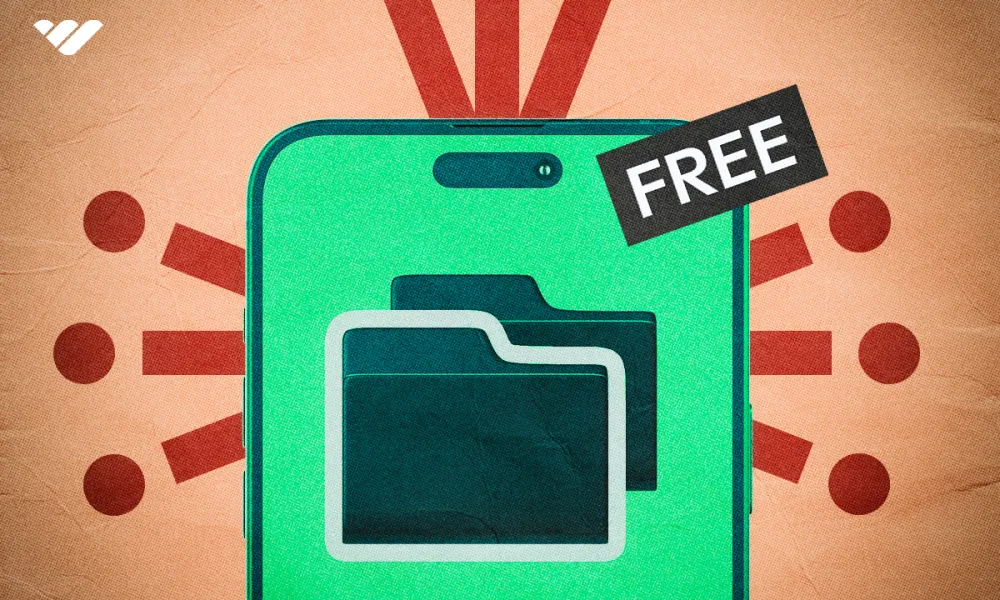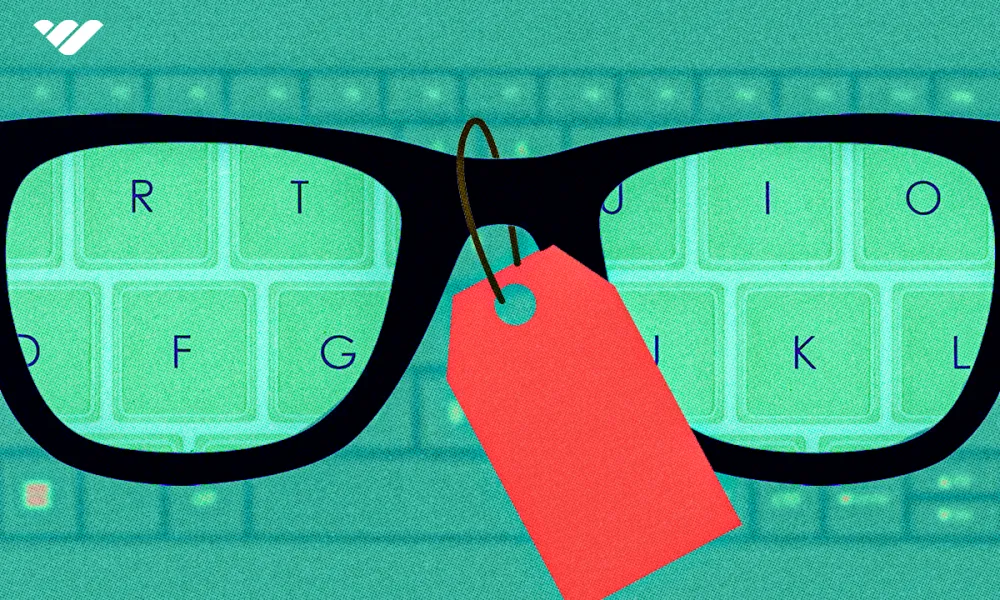You can make money selling digital products in 2026 by turning your knowledge, skills, or creativity into downloadable or access-based offers - like courses, templates, software, or memberships - and selling them online through platforms like Whop.
Selling digital products isn't complicated - you just need a product and a place to sell it. The whole setup takes a few hours: source or create your product, choose a platform like Whop, upload it, and you're live. No inventory costs, no shipping headaches, just pure profit margin.
And with the digital product market projected to hit $416 billion by 2030, there's never been a better time to make money online, or an easier way to do so.
Whether you’re a creator, coach, developer, or just a budding entrepreneur, there's a digital product niche for you. Let's take a closer look at what digital products are and how you can sell them.
How to sell digital products
1. Make (or buy) your digital product
If you want to sell digital products, then you need to have a digital product to sell.
If you already have your product ready to go, then skip this step.
Find a niche
If you don’t already have a digital product in mind, start by finding a niche or area to focus on. Are you a pro-level gamer? A day-trader? A former maths teacher?
Begin by asking:
- What are you experienced in?
- What topics are you passionate about?
- Is there a gap in the market you've noticed?
- What issues are people having because of said gap?
- Who struggles with said issue, and how can you help them?
These questions help spark ideas for things you could create, teach, or share.
For example, if you're into investing, you might start a paid community that shares finance tips. From there, you could expand into ebooks, online courses, or coaching.
Advice from a Redditor:
Look for a niche product and market. For example, we had great success in the finance sector targeting mortgage advisors with IG templates specifically. This built an email list and we were able to grow out and sell other products.
- Redditor speaking on digital product niches
Do your market research
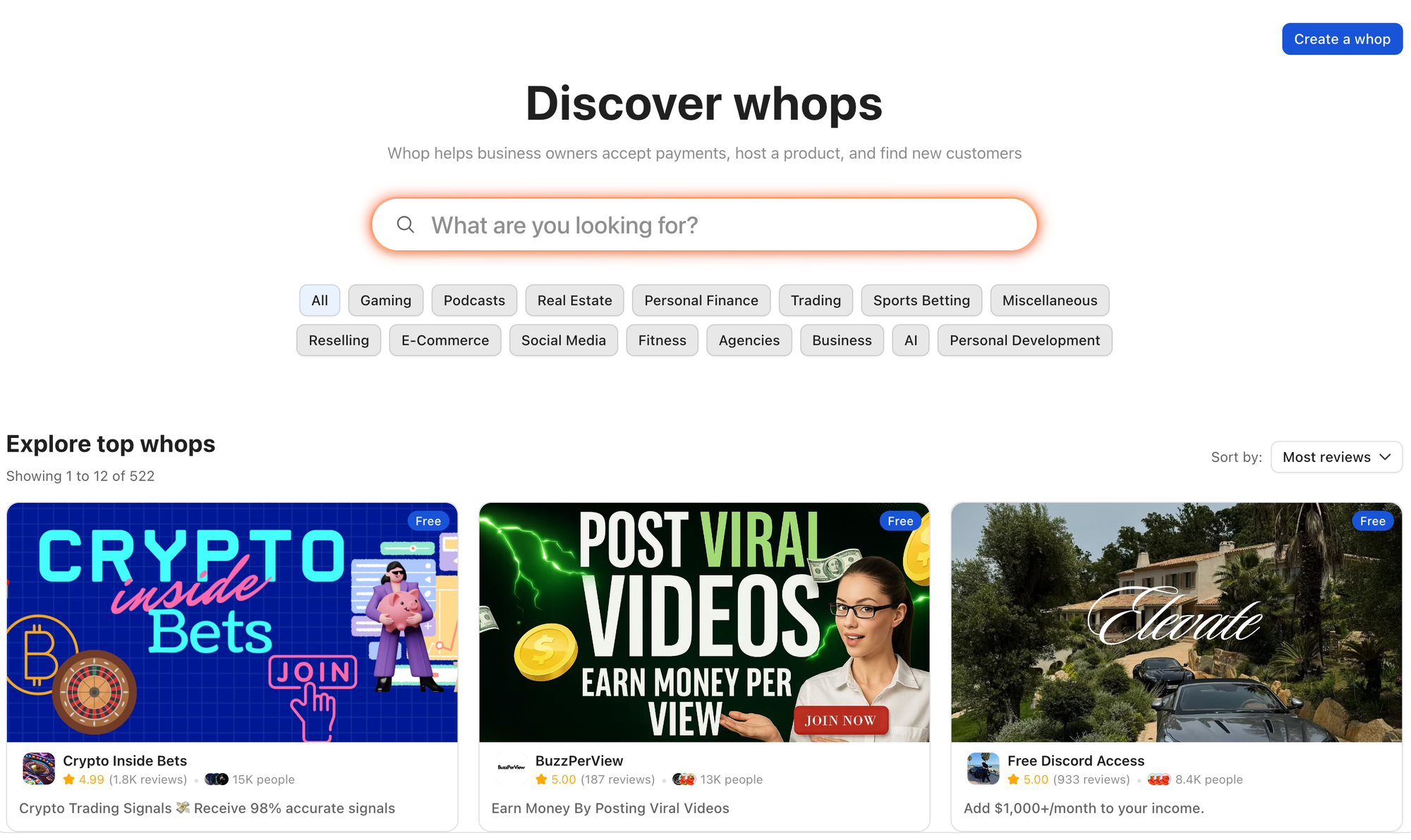
Before deciding on an idea, take a second to see if others are already selling something similar. If they are, that’s actually a good sign — it means there’s demand. If not, check if people are talking about the idea on Reddit or social media.
You can also test interest by making a quick post in a relevant community. The feedback you get can help you decide if it’s worth pursuing or how to tweak it.
Next, do a bit of keyword research. Look up phrases that describe your product, like “crypto ebook” or “fitness course.” If the results are too crowded, try something more niche like “NFT ebook” or “fitness course for new moms.”
Helpful tools:
- Google Trends
- Ubersuggest
- Answer the Public
- WordStream Keyword Tool
Start making your digital products
Now it's time to execute, and luckily, you can usually create your products using free tools and software. But what are you making?
Digital products come in all shapes and sizes; some take just a few hours to make, while others are more complex. Here are a few popular types:
- Ebooks and downloadables: Workbooks, planners, habit trackers, or even Figma templates. These are quick to create and easy to sell.
- SaaS and tools: Apps, plugins, or templates. These take more effort but offer big value if you’re already tech-savvy.
- Digital media: Podcasts, newsletters, stock content, or video subscriptions. Great for creators who love producing content.
- Online courses: Teach anything from coding to fitness. Courses are high-value and ideal if you have skills others want to learn.
- Memberships and communities: Create a paid space where people can connect, learn, and access exclusive content.
Don't want to make your own digital product? No problem. You can buy done-for-you digital products with resale rights that you can customize and resell. Just add your logo, set your price, and you're good to go.
2. Find the right platform to sell on
Selling digital products might seem simple, but many ecommerce platforms come with limitations. Some only support certain product types or require extra apps and workarounds.
For example:
- Shopify supports digital downloads, but you need an integration to deliver files or run coaching services.
- TikTok doesn’t support digital products directly — you have to link out to another site.
- Etsy is great for printables or templates, but not ideal for courses or subscriptions.
- Kajabi, Patreon, and Amazon each focus on a narrow set of digital products.
That’s a problem if you want to scale. Imagine starting with digital planners on Etsy, then deciding to sell a video course. You’d need a totally different platform, plus convince your audience to follow you there.
This is frustrating and time-consuming. You need an all-in-one platform.
Whop makes it easy to sell digital products. It’s an all-in-one platform built specifically for creators. Downloads, courses, communities, coaching, SaaS tools, or even sports picks — Whop lets you do it all from one storefront, no third-party tools required.
Whop is now a fully independent payment processor, giving sellers more flexibility and ways to earn. Lower fees, more payout options, and less failed transactions.
3. Market and grow your business
Once your store is set up, it’s time to start bringing in sales — and with the right marketing, those sales can grow fast.
First, get clear on who you're selling to. How? By creating a target persona, or a simple profile of your ideal customer. Ask yourself:
- Who are they?
- What do they do?
- Where do they spend time online?
- What kind of content or ads are they likely to engage with?
- What types of offers or deals would grab their attention?
Once you’ve nailed down your audience, you can choose your marketing strategy based on how niche or broad your product is.
If you’re targeting a specific group (like sneaker resellers), it’s totally fine to stay narrow. You’ll get better results by focusing your efforts.
But if your product appeals to a wider crowd, you’ll need to use a mix of tactics — different channels, different formats, different messages for each segment.
4. Monetize smarter: Boosting your income
At this point, your digital product is up for sale and you're starting to make a profit. Now, it’s time to think about how to leverage each customer purchase to create a more sustainable income stream.
Here's how:
Use tiered pricing
Offer different versions of your product at different price points. For example, a basic course might include just videos, while a premium version adds live coaching or bonus downloads.
Offer bundles, promos, and upsells
Encourage bigger purchases by grouping related products together. If someone buys your planner, offer a discounted habit tracker or ebook at checkout.
Try affiliate marketing
Let others promote your product for a cut of each sale. It’s a powerful way to tap into new audiences with zero upfront cost, and it's simple to create affiliate programs with Whop.
Offer free products as lead magnets
Offer a small freebie (like a checklist or free community) to build your customer base. Then upsell paid products to your free users.
Sell digital products with Whop in 6 easy steps
Look, Whop isn’t just another platform that can host digital products — it's a social commerce platform built exclusively for them.
Whop supports both subscriptions and one-time payments, allowing you to create whatever pricing model best suits your products and make money online.
Ready to start selling? We'll walk you through the process of setting up your whop so that you can see for yourself just how easy it is.
1. Sign up to Whop
It'll take you about 5 minutes to sign up. Either use an email address or sign in with your Discord, Google, a crypto wallet, X, or Apple account.
Next, you'll need to pick a name for your whop. Don’t worry - you can change the name later if you want.
You'll also need to set a URL – this can't be changed, so it's best to go with something personal or specific.
2. Add your apps
To build out an offer, you need to customize your whop with apps. There are over 150 apps to choose from, from games to merchandise and even giveaways. But first, you'll need to add the basics:
If you’re selling courses, add the Courses app, which allows you to build out modules. For digital templates and files, add the Files app. To build a community, add the Chat app. For coaching, the Calls app, and so on.
There's no limit to how many apps your whop can host, so let your creativity be the guide.
3. Build your first product
Think of your whop as a product in itself. Some content — like PDFs or videos — can simply be uploaded using the Files app. Others, like full courses or interactive content, can be built directly using Whop’s native tools.
For example, the Courses app lets you create a course from scratch by adding:
- Text lessons
- Video content
- PDFs
- Knowledge checks
- Quizzes
Add as many apps as you want – you can even create multiple whops under the same organization. This is useful if you’re selling multiple products, like beginner and advanced versions of a course.
4. Customize your storefront
Your products are ready to go, and it's time to customise how your storefront looks to motivate buyers.
Click on the "Manage store" button in the banner card of your whop at the top left of your screen.
There, you can make your storefront uniquely yours. Craft a strong offer headline, add pictures or video, add FAQs, your details, and use keywording to hit SEO metrics.
5. Apply to the Discover page
Don't even consider skipping this step – it’s a no-brainer to boost visibility and increase revenue. Getting featured on Whop Discover puts your store in front of more potential buyers.
To apply:
- Scroll to the “Set up your whop” card at the bottom of your store editor.
- You’ll see a checklist — make sure every item is completed.
- Once everything is ticked off, click “Apply for Discover” in the Discover section under Manage whop.
6. Set up your payments
Next, set up your payments:
- Go to your Dashboard
- Click Finances > Payouts
- Follow the prompts to connect your Stripe account and verify it
That’s it: your store is live, your products are ready to sell, and you’ll get paid every time someone makes a purchase.
If you really want to boost your income, you can get creative with pricing strategies.
Advanced pricing strategies
Once you’ve built your digital product or coaching offer, the way you price it can make all the difference. Whop makes it easy to test, tweak, and optimise your pricing for maximum sales.
Here are a few ideas:
- A/B testing: Don’t guess what people will pay, test it. Try creating two versions of your product at different price points (like $97 vs $127), and see which performs better. Track conversions and revenue, then pick the price that works best.
- Psychological pricing: Numbers matter, and that's why you see items listed for $9.99 and not $10. Pricing at $97 instead of $100, or bundling multiple products together, can influence buying decisions without changing your core offer.
- Regional pricing: Selling worldwide? Adjust prices by region to make your products accessible while maximising revenue.
With Whop, you can run all of these strategies directly from your dashboard, no third-party tools required.
How much can I make selling digital products?
Truthful answer? It all depends on your offerings, prices, and marketing efforts.
But with Whop? Creators have already sold over $1.8 billion in digital products and offers. 25,700 people earned more than $140,000,000 in August – and we're just getting started.
By stacking offers and multiplying passive income streams, you could be earning big, too.
Start selling digital products with Whop
From courses and coaching to templates, memberships, communities, apps, and AI-powered tools, Whop lets you bring all your digital products together in one seamless ecosystem.
No juggling platforms, no coding required, no messy payment integrations – just a single place to create, manage, and scale your online business.
You can set up your Whop in minutes, explore the native apps, and start selling immediately, with no sign-up fee.
From launching your first product or building out a full suite of offerings, Whop puts the power and profit back in your hands.
Start selling your digital products online today and see how far your expertise can go.
FAQs
What are digital products?
Digital products are items you can sell and deliver online, like ebooks, online courses, software, templates, subscriptions, stock content, and more.
They’re flexible, profitable, and often generate passive income long after you’ve created them.
What's the difference between selling physical and digital products?
The biggest differences between selling physical products and digital products are simplicity and cost. To sell a physical product, you have to buy or manufacture a constant stream of stock, store it somewhere, package it, and ship it to customers.
To sell digital products - well, you don’t need to do any of that.
| Things you need to sell physical products | Things you need to sell digital products | |
|---|---|---|
| Products | Either designed and manufactured by you or sourced from someone else | Designed or decided by you, with no sourcing and manufacturing required |
| Stock | Not too much stock, not too little, and somewhere appropriate to store it | Often not needed at all! You can sell your digital product indefinitely |
| Fulfillment | Partners or employees that can pack the products, label them, deliver them, track the shipping and stock levels, and provide customer service | All you need is a service that will email download codes or grant access to customers when they make a purchase |
How do I sell digital products on Etsy?
To sell products on Etsy, set up an account and create a new listing. You’ll see an option in the Core details section where you can specify your product as digital. Then, all you need to do is fill in the About section, title, description, tags, and price before publishing the listing.
How can I sell digital products on Amazon?
To sell digital products on Amazon, all you have to do is sign up for the right kind of account (which depends on the product type) and submit your product for approval. Then, you can make your listing and start selling on Amazon.
How to sell digital products on Shopify?
When you add a product to your Shopify store, you can specify it as a digital product to remove the shipping fees. Then, you can use an app like the Shopify Digital Downloads app to provide download links to your customers.
You can also customize your email templates for digital products so that when customers make a purchase, the confirmation email tells them how to download or access the product.
Can I sell digital products on TikTok Shop?
TikTok Shop doesn’t offer digital products yet, so you can’t sell your digital products there. You can use TikTok for marketing purposes to drive customers to a different ecommerce platform, though.
What are the best digital products to sell?
The most popular digital products are ebooks, downloadables, exclusive paid communities, courses, apps, and podcasts. Niche products sell really well because they provide specific or custom-made products that consumers can’t get from big brand names.
| Product type | Best for | Effort to create | Top platforms |
|---|---|---|---|
| Online courses | Educators, coaches, creators | Medium–high | Whop, Teachable, Kajabi, Shopify |
| Memberships & communities | Niche experts, influencers, fandoms | Medium | Whop, Patreon, Circle.so |
| Ebooks & guides | Writers, niche experts, info marketers | Low–medium | Whop, Amazon KDP, Gumroad |
| Digital planners | Productivity creators, lifestyle niches | Medium | Whop, Etsy, Creative Market |
| SaaS & micro-apps | Developers, marketers, startup founders | High | Whop, Gumroad, custom sites (with Stripe) |
Can I sell digital products without a website?
Yes! It’s easy to sell digital products without a website—you just need to sign up for a marketplace like Whop. Here, you can create your own whop offering all of your products, along with a secure payment system and lots of cool ways to interact with your customers.
Why sell digital products?
Perhaps the most compelling reason to sell digital products is that it’s low risk. The barrier to entry is so low that, for some digital products, all you have to commit to the project is the time to design and make the product.
No matter which niche of digital products you want to dive into, there are growth projections all around.

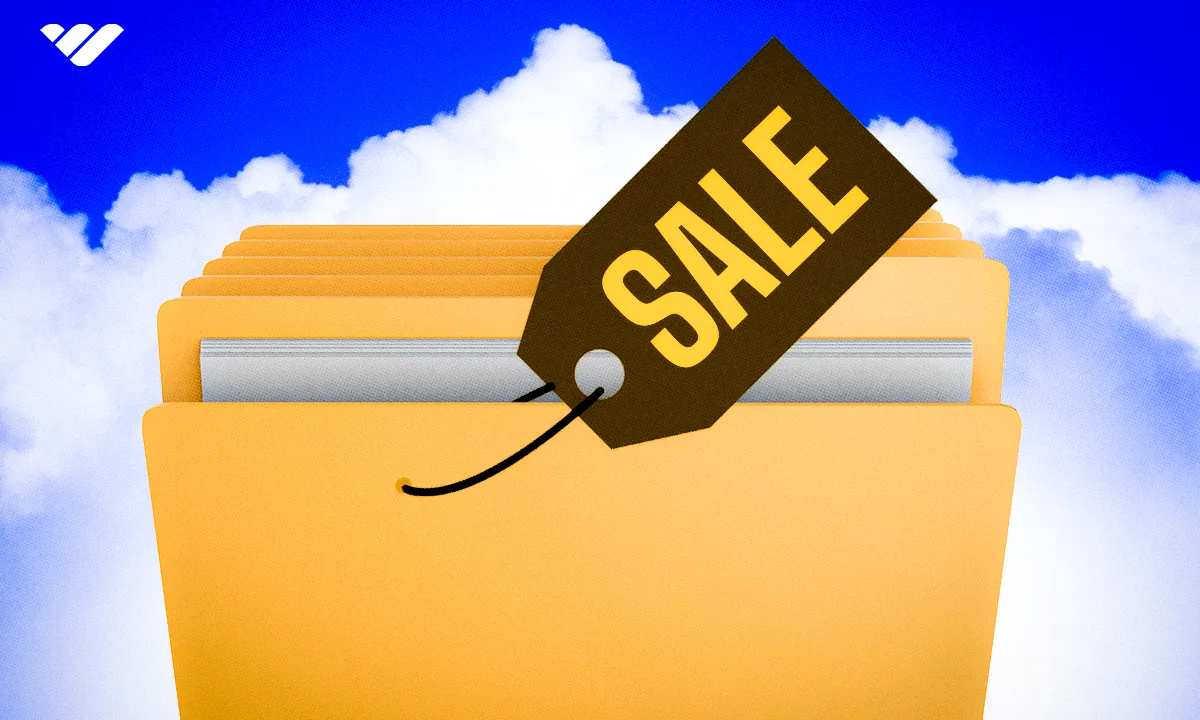
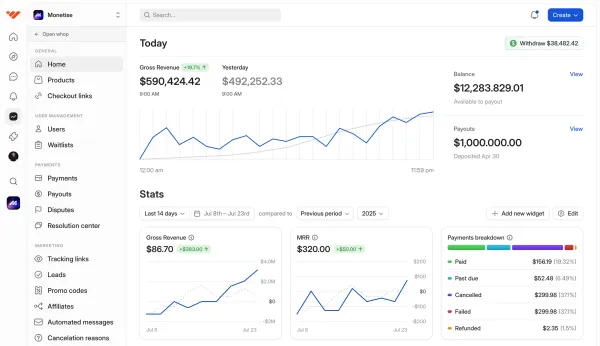
![How to sell digital products without a website - ultimate guide [2026]](/blog/content/images/size/w1000/2024/02/How-to-Sell-Digital-Products.webp)


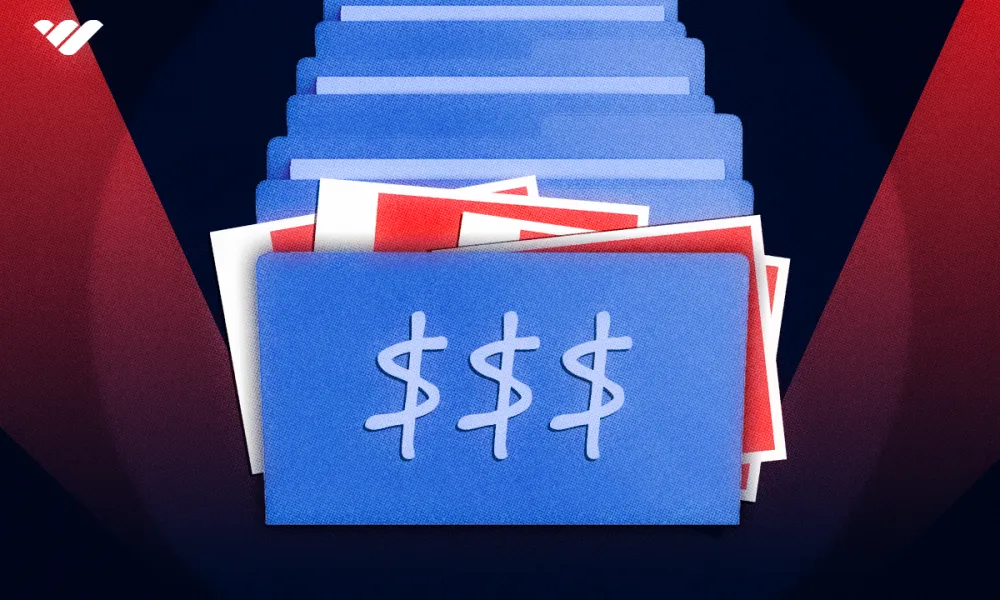
![Where to sell digital products [2026]](/blog/content/images/size/w1000/2023/11/Where-To-Sell-Digital-Products.webp)

